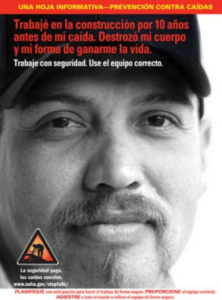In the last 10 years, the options we have to reach target audiences has exploded. For instance, I don’t think many would dispute that technology has revolutionized our marketing and communication strategies. There are multiple digital platforms to brand, create experiences on, and use to distribute messages. Yet, despite this revolution, I’ve observed that there are some strategies that work from one decade to the next, especially in reaching and engaging diverse audiences. Over the years, I have found that successful multicultural outreach campaigns use all of these 3 key strategies. They are: representation, cultural appropriateness and partnerships. Here’s what I mean.
1.Include Representation on Teams
A key approach to reaching diverse audiences is to comprise a team that reflects diversity and inclusion. Representation inevitably leads to insights and access that might be difficult to achieve otherwise. A diverse team and inclusive thinking results in culturally relevant strategies, content, collateral materials and partnerships. This approach was just as true 20 years ago as it is today. Having designed and executed dozens of research studies to support nationwide campaigns for the Centers for Disease Control and Prevention (CDC), we have seen the benefits of conducting research with participants representing African American and Latino communities. In our experience, taking the time to be inclusive always resulted in determining creative, messaging and strategies that best resonated with the participants, which often differed from the selections of other audiences.
Fast forward 20 years later when we worked with the National Institute for Occupational Safety and Health (NIOSH) to develop a ground-breaking nationwide campaign targeting construction supervisors and workers of small businesses to work safely from heights. Many of our target audiences were Latino. Our team included bilingual and bi-cultural members who worked to create distinct strategies and messages for our Latino audiences. When necessary, they trans-adapted and translated collateral for the campaign. What helped to make the campaign successful is the community-based partnerships we developed that extended the distribution of safety messages and enabled us to conduct formative focus group testing in Spanish to ensure content, brands and collateral were effective.
 2. Ensure Cultural Appropriateness and Relevance
2. Ensure Cultural Appropriateness and Relevance
Years ago, we worked with a client to test seat belt promotion messages and approaches targeting African American males between the ages of 18 and 50. This was around the same time that Diana, Princess of Wales, died tragically in a car accident. News outlets reported that she was not wearing a seat belt, which likely contributed to her death. One approach the client wanted to consider was to incorporate Princess Diana’s accident in campaign creative and messaging to illustrate why it was important to wear a seat belt. This approach tested enormously badly. It was culturally inappropriate. Why? Participants could not relate to Princess Diana and said she had nothing to do with their world. Our participants told us that a higher power was more in control of their fate, and wearing a seat belt was therefore unnecessary. For many, however, the idea that they could be seriously injured in an accident and not be able to provide for their family gave them serious pause. Appealing to the fear of living with the impact of a life-altering accident would be a relevant approach for the campaign.
Today, cultural appropriateness is just as important. When we helped the CDC design and execute a safety campaign targeting construction workers, culture played a central role in our branding and messaging. Of course, we created campaign products in Spanish and English. More importantly though, we understood that this federally sponsored program was unprecedented in the United States. We went global to look for approaches and messages that might work here and found dozens of approaches that were successful in countries such as Canada, the United Kingdom and Australia. When we tested approaches such as a humor or fear or factual approach, they frankly tanked. We found out that the best approach was to include in the campaign other construction workers that were from their culture and shared the same concerns surrounding safety on the job. They too wanted to stay healthy so that they could provide for their families.
3. Establish Salient Partnerships
In 2000, I was a consultant to the White House Office of National Drug Control Policy to develop effective ways to advertise and market to African American audiences. We designed a strategy that included partnering with secular groups and community-based organizations to extend campaign messages for the National Youth Anti-Drug Media Campaig
Nearly 20 years later we helped the Maryland Benefit Exchange increase health enrollment rates by nearly 40% among African Americans in Maryland by creating partnerships with mega churches that helped us extend messages and content to thousands of congregants. We also partnered with community-based organizations such as the Urban League, sororities, fraternities, and the National Association for the Advancement of Colored People to extend campaign messages from trusted sources to African American Maryland residents. These partnerships enabled us to have far-reaching distribution of the brand and messages.
In conclusion, while parts of our industry are changing at the speed of light today, there are some strategies that stand the test of time decade after decade and that continue to help us create campaigns that reach and engage our audiences.

